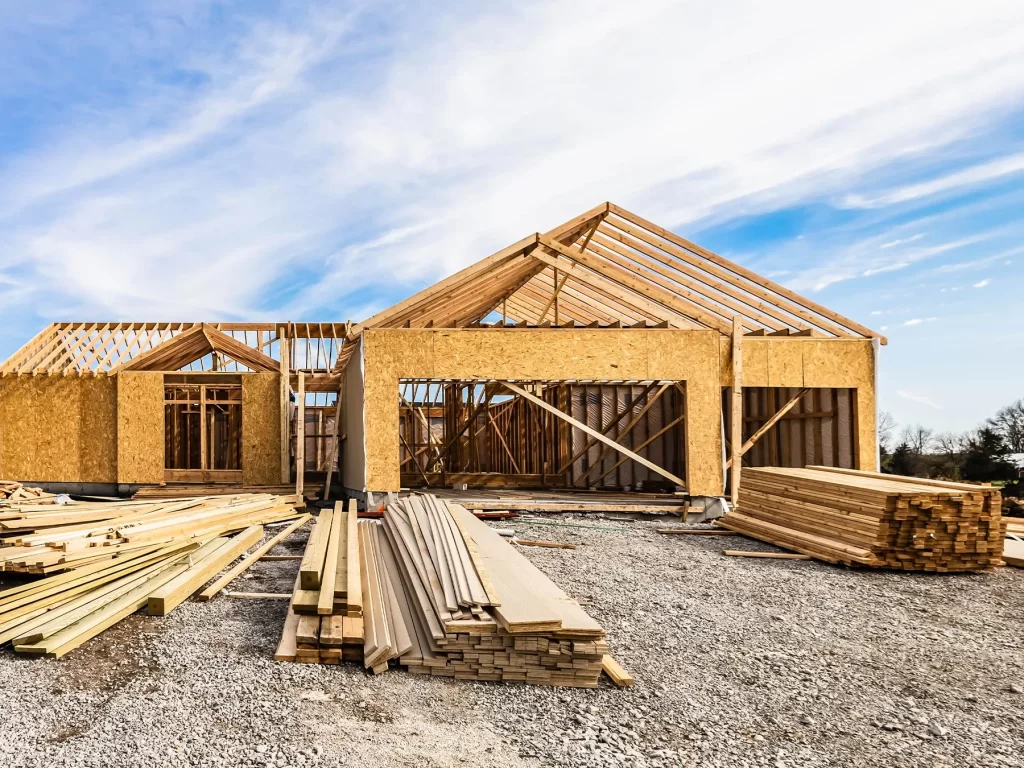Climate-related disasters like hurricanes, floods, and wildfires have led to a growing concern over the selection of construction materials for residential homes. Despite the resilience of concrete, the United States still favours wood for housing construction. Concrete is known for its resilience in extreme weather events, but its reliance on wood raises questions about prevailing industry practices, regulatory frameworks, and societal perceptions. Wood, while abundant and aesthetically pleasing, lacks the inherent strength to withstand nature’s wrath. In hurricane-prone coastal regions and fire-prone areas like California, wooden homes are exposed to flames, often succumbing to rapid conflagrations. As the frequency and intensity of climate-related disasters increase, the urgency to reevaluate construction material choices becomes more urgent. Understanding the persistence of wood as the material of choice is not only a matter of practical necessity but also a critical inquiry into the resilience and adaptability of the built environment in an era defined by climate uncertainty.
Concrete: A Resilient Alternative
Despite concrete’s proven track record in resisting hurricanes and other disasters, many American homes remain constructed primarily from wood. This preference persists even as insurance companies, grappling with the escalating costs of climate-related damage, often refuse coverage for houses ravaged by hurricanes. The contradiction is stark: in a nation plagued by increasingly frequent and severe weather events, why does the allure of wood endure, despite its susceptibility to destruction?

Championing Resilience: The Case of Eric Soulavy
In the age of climate change, Eric Soulavy is redefining luxury with hurricane-proof coastal homes at a private waterfront resort on Key Largo’s northern tip. Nestled between tropical forests and the Caribbean, his three-story condominium project exemplifies cutting-edge resilience against extreme weather. With prices starting at $5 million for a four-bedroom unit, the 27 concrete-encased apartments boast robust defenses: perched 13 feet above ground, they feature windows that can withstand 174 mph winds and flood pumps capable of removing 20,000 gallons of water per hour from the parking garage. A massive generator, housed in its own building, ensures continuous operation during emergencies.

The Accessibility Challenge: Making Resilience Mainstream
Soulavy, steeped in the luxury market, emphasises the need to exceed expectations for affluent buyers. This approach reflects a broader trend among architects and engineers who are designing increasingly effective protections against extreme weather. However, these innovations, though promising, are often limited to the wealthy, exceptionally safety-conscious, or simply eccentric homeowners.
Barriers to Adoption: Inertia and Awareness
Roy Wright, former head of risk mitigation at FEMA, criticises the slow adoption of storm-resistant building techniques, stressing the urgent need for widespread implementation. Last year, only 8 percent of the 800,000 single-family homes built in the U.S. featured concrete frames—a key method for enhancing structural resilience. Even basic advancements face sluggish uptake. The Insurance Institute for Business and Home Safety (IBHS), which Wright now leads, developed the “Fortified” standards in 2008 to ensure roofs can withstand hurricanes. Yet, in a decade, only 8,126 homes have received this certification.
Innovative Solutions: Tailoring Designs to Climate Threats
Architects are responding with innovative designs tailored to various climate threats. For flood-prone areas, Ontario architects have proposed “amphibious” homes that float on guideposts during floods. In wildfire zones, Seattle’s Olson Kundig architecture firm combines non-combustible materials like concrete, glass, and steel with exterior sprinklers. Deltec Homes in North Carolina builds circular, conical-roofed houses to deflect hurricane winds. Toronto’s Sustainable.to employs insulation and strategic orientation to maintain indoor temperatures during power outages following disasters.

Concrete’s Continued Appeal: Building for Multiple Hazards
Concrete construction remains a favoured solution for multiple hazards. New York City architect Illya Azaroff designed a resilient home in Breezy Point, Queens, using insulating concrete forms (ICF). This method involves pouring concrete between foam blocks, resulting in a structure far stronger than traditional wood frames and only about 15 percent more expensive. Such homes can withstand hurricanes, floods, heat waves, tornadoes, fires, and even earthquakes, yet blend seamlessly with surrounding buildings once finished.
Overcoming Industry Inertia: Addressing Fragmentation and Incentives
The home-building industry’s reluctance to change exacerbates the slow adoption of resilient designs. A McKinsey Global Institute report revealed that while productivity in most industries has soared since the 1950s, construction productivity remains stagnant, especially in single-family home building. McKinsey’s Chris Toomey attributes this stagnation to the industry’s fragmentation among small firms, hindering the dissemination of new techniques.
Incentivizing Resilience: The Role of Insurance and Regulation
Incentives also play a critical role. A federal study found that exceeding local building codes yields long-term financial benefits for homeowners, communities, and mortgage lenders. However, developers, who typically sell properties upon completion, see minimal immediate returns. FEMA encourages tougher standards by offering lower flood insurance premiums to communities that surpass local codes and mandating the latest national model codes for its funded projects. Yet, building standards largely remain a local responsibility.
Insurers as Catalysts for Change
Insurers are advocating for stricter construction standards through the Fortified designation, designed to enhance homes’ durability and resilience against severe weather conditions. The program, championed by industry experts like Wright, costs around $1,000 per roof, a small investment for increased protection. Wright’s group is working with a coalition of local governments, roofing companies, and builders to promote the adoption of higher construction standards. The growing awareness of the severe consequences of hurricanes has led to a rise in demand for Fortified standards. The increasing frequency and intensity of natural disasters highlight the urgent need for enhanced building practices. Wright and his group are leading efforts to create a safer, more resilient built environment, reducing financial burdens for insurers and homeowners while protecting lives and property in the face of climate challenges.
Conclusion: Accelerating Resilience for a Changing Climate
While developers like Soulavy cater to luxury buyers with state-of-the-art defenses, the broader challenge lies in making resilient construction accessible and appealing to the wider market. The evolution of resilient design is crucial as climate change continues to amplify the frequency and severity of natural disasters. By accelerating the adoption of innovative construction techniques and raising awareness among homeowners, the industry can enhance the safety and sustainability of future housing developments.
Feature Image Courtesy: Bigrentz
References
- Global Watchdog – American and European Homes Face-Off
- TIME – Why Is the U.S. Still Using Wood to Build Houses?
- AIA – The State of Resiliency in the Built Environment
- American Wood Council – Resilience
- NAHB – Resilient Residential Construction
- ArchDaily – Construction Materials that Increase Resilience to Natural Disasters
-
Bloomberg – Hurricane-Proof Homes Are Real. Why Isn’t Anyone Buying Them?





